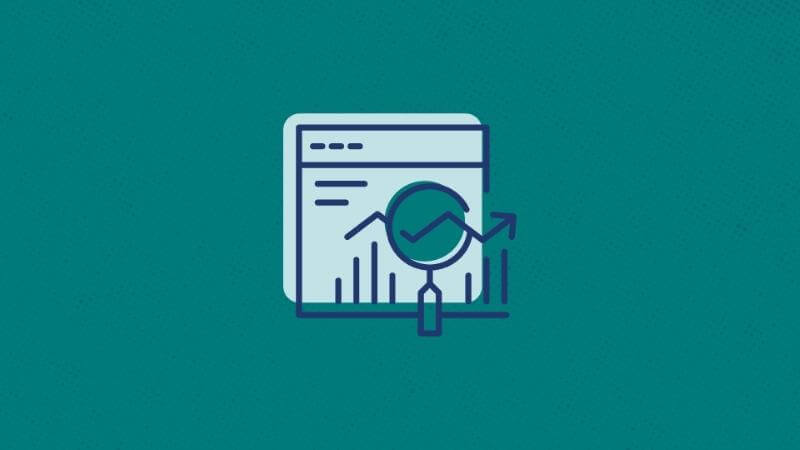Real Estate Marketing Budget: How Much to Spend?
June 22, 2022
Real Estate Marketing

Real Estate Marketing Budget: How Much to Spend?
Lead Generation, Lead Nurturing, News, Real Estate CRM, Real Estate Marketing
To stay profitable and future-proof your business, you may need to reconsider how you define success. While metrics like gross commissionable income and cost-per-lead may be useful, they don’t always give you a complete picture of your business. They may not take into account how much you’ve had to invest and can make it hard to reliably predict your success. Instead, it’s important to track your marketing spend all the way through the transaction in order to understand the returns you’re gaining. And that means using metrics that focus on quality, rather than quantity, so you can increase your transaction-ready leads.
Explore the potential benefits of integrating real estate lead generation software into your business strategy.
How much should real estate agents spend on marketing?
The amount you invest in your marketing budget will ultimately depend on your income. In general, you should aim to spend about 10% of your commision income on marketing. However, there are exceptions to this. New agents just getting started may not be able to allocate 10% of their income toward marketing. Likewise, larger agencies in competitive markets may want to spend as much as 15% to 20% (or more) of their income on marketing.
Before creating a budget, it can be smart to first consider any variables that may affect your marketing spend. This can include your average commission on sales, the average sales prices of the homes you sell, and the number of transactions for quarter or year you conduct. Try to consider longer term trends rather than basing your marketing budget off of one good or bad year. And don’t be afraid to adjust your budget as you move forward.
What activities to include in your real estate marketing budget
Like your budget itself, choosing the right marketing activities to invest in will depend on your business, its particular needs, the market you are working in, and many other factors. But to help you decide, the following are a few marketing strategies you should probably consider.
PPC Advertising
PPC (pay-per-click) advertising is a popular marketing tactic that lets you utilize specific keywords to create highly targeted campaigns that reach the exact audiences you want. And because you only pay for the viewers who actually click on your ad, as opposed to the number of times it appears, it can be a cost-efficient marketing approach as well.
Not only that, but PPC advertising offers instant visibility on search engines and relevant websites, ensuring a higher probability of lead generation. Additionally, PPC provides measurable results, allowing you to track conversions, optimize your campaigns, and allocate your budget more effectively.
Social Media / Online Profile
When trying to reach a large audience, few other mediums offer a bigger pool of users (and potential leads) than social media. This alone makes it an essential place to market your agency. But social media platforms like Facebook and LinkedIn also offer precise targeting options, allowing you to reach people based on factors like demographics, geography, and behavior, helping to increase the likelihood of conversion.
By using other features, like lead generation forms and messaging options, you can also foster direct communication with potential clients and start forming a relationship. And because they also allow you to track and analyze your campaign performance, you can continually optimize your ads so that they connect with your audience and generate leads.
Content Marketing
Embracing content marketing can be an effective way to promote your agency while also burnishing your brand. By creating informative and valuable content like blog posts, videos, and guides, you can educate and engage your target audience, helping to establish yourself as a trusted and knowledgeable authority in the industry. This, in turn, will make it much easier to establish long-term relationships with potential clients.
On top of this, content marketing is also great for search engine visibility. The reason is simple: the higher quality the content, the more it will attract organic traffic. In addition, good content marketing will give you plenty to share across social media, helping to increase your brand exposure and reach – making you top of mind when it comes to buying or selling a home.
Optimizing Your Current Marketing Budget to Maximize ROI
Cost-per-close, cost-per-lead and other key metrics for a real estate business
Figuring out how to maximize your ROI starts by understanding your true costs. Commonly, that begins with examining cost-per-lead. That’s a good place to start, but if you aren’t tracking your spend all the way through transaction, you are missing a big chunk of the picture. We suggest looking at cost-per-close in addition. Here’s the difference:
- Cost-per-lead: how much you’re spending to attract potential buyers to your available properties. This is really a measurement of quantity and efficiency — the amount of money you’re spending to land a new lead, regardless of their true intent to buy. Lowering this means you are generating more leads for less money. It doesn’t mean you are generating more business for less money.
- Cost-per-close: how much you’re spending to close on a property. This is a measurement of quality and ROI. It measures how much you’re spending to achieve a return on investment — the amount of money you’re spending to land a new customer. Lowering this means you are generating more income on less investment.
On the surface, a low cost-per-lead figure may suggest you’re on track for success. You’re attracting a lot of traffic to your website and converting more of that traffic into leads. Both those things are good, if your goal is to build brand awareness and secure your position as a realtor of choice. Some companies, like Zillow, even recommend cost-per-lead as a key performance metric.
If you want to measure how successful you are at converting your leads within your given budget, it is far more telling to look at your cost-per-close. This can tell you both the quality of the audience you’re attracting to your website who ultimately become your customers and how much money it takes to generate income. It can also help you understand where your best leads come from or where to improve your conversion rates.
Take a look at this example of a cost-per-lead scenario:
Let’s say you’re a realtor spending $5 per lead and generating 1,000 leads at a 3% conversion rate and a 25% close rate. That means you’ve spent $5,000 to get roughly eight closes at $625 per close.
Your options are:
- You can either spend more money to get more leads, and continue to convert (and close) at similar rates (and lose that $375 difference between what you’re spending per lead, versus what you’re gaining per close).
- You could generate better quality leads (sometimes even at a higher cost) but improve results and ROI (cost-per-close).
Instead, refocus your marketing budget where it matters most
Here’s an example demonstrating the benefits of choosing option two. Let’s say you’re a realtor who has moved your marketing spend to a better website and improved your conversion rates by 7 percentage points for a new conversion rate totaling 10%. Now you’re spending $5 per lead, generating 1,000 quality buyer leads at a 10% conversion rate and a 25% close rate. That means you’ve spent $5,000 to get roughly 25 closes at $200 per close.
So, even though you’re spending the same amount of money, you have:
- More than tripled your rate of conversions
- Cut your cost-per-close by over 30%
- Increased your properties closed by 212.5%
If you went with option one, you’d have to increase your total spend by almost $12,000 to achieve enough leads to get the same amount of closes. The likelihood long-term effects of this scenario is that your budget will get out of hand, even if you have implemented a cost-ceiling for your cost-per-lead spending.
Make your marketing budget go further
To make your marketing spend go further, work to lower your cost-per-close rate. If you can achieve a lower cost-per-close, without adjusting your marketing investment, you’re getting a better ROI.
Start by building your website with real estate website features that specifically work to help realtors close more deals through quality lead generation. If it’s also supported by a real estate CRM, you can gain more actionable insights from your data and continually adjust, depending on what your cost-per-close data is telling you.
“What sets my approach to business apart from others’ in my industry is the amount of detail I look at in order to optimize commissions. To invest in software, it has to ultimately contribute more dollars in your pocket at the end of the day.” – Eric Richards, Broker, Springs Houses Online Realty, LLC
Not all real estate database systems are equal
The solution to keeping costs low and output high does not end with just any real estate database system. Look for a platform that:
- Can tie together your online presence with real estate IDX websites and ad management
- Has an expert real estate CRM built-in to connect the dots between your efforts and analyze key performance metrics
- Supports actionable next steps through built-in CRM features, like automations, lead routing, dialer and ringless voicemail, and other follow-up nurtures.
- Improves quality of leads, and supports easy follow-up and lead management with lead contact information in your preferred communication channels
- Optimizes your investment by increasing conversion rates from the quality leads you’re generating
Author
Schedule a Demo
Thoughtfully designed features, intuitive workflows and stunning UX. You’re about to find out why top-performing real estate teams pick Sierra.
Sign UpPrevious Post
Proven Strategies to Find Motivated Home Seller Leads
Next Post
Switching Real Estate Software
Related Posts

Real Estate Business Planning
Taking Data Security and Availability Seriously

Lead Generation
Secrets to Converting Real Estate Seller Leads into...

Lead Generation
The Ultimate Guide to Qualifying Real Estate Seller...

Lead Generation
